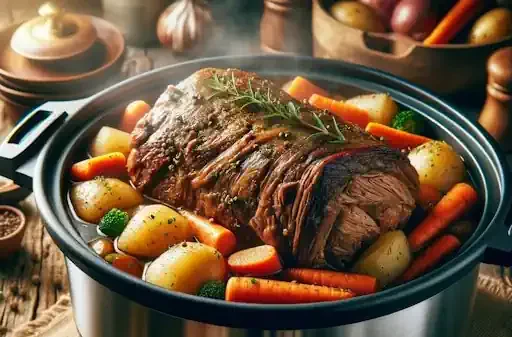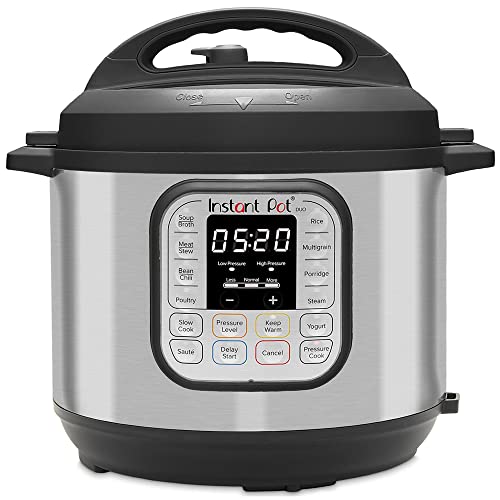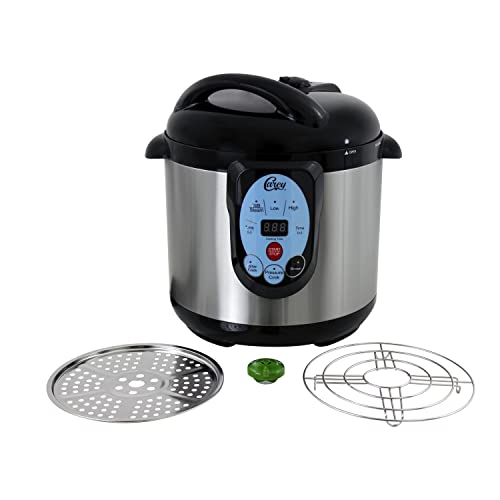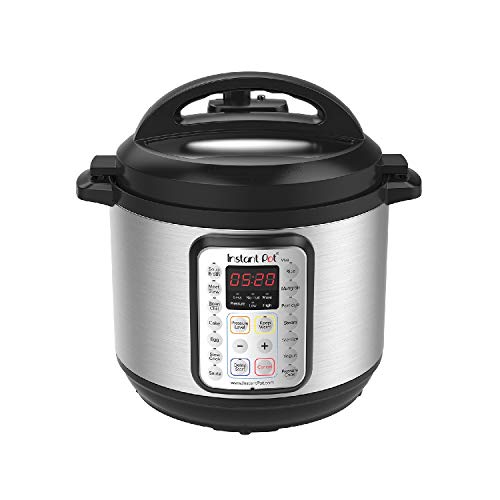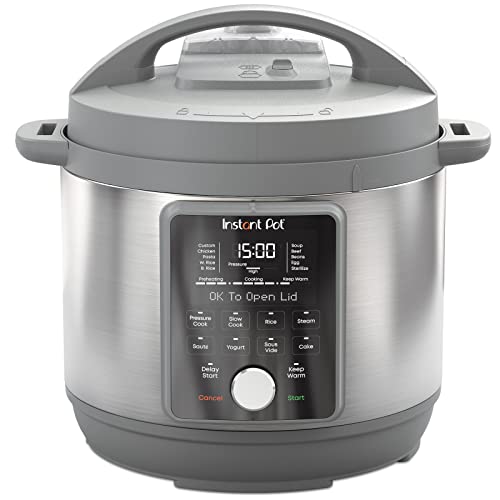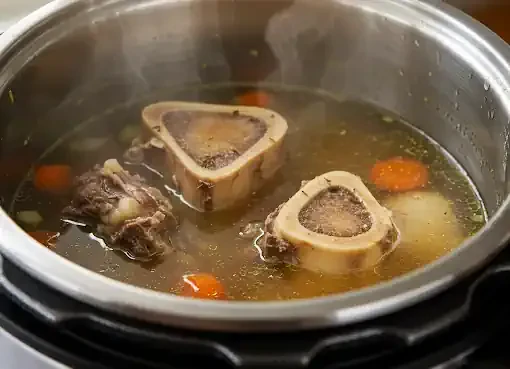The humble pot roast, a staple of comfort food in many cultures, has long been celebrated for its simple preparation and heartwarming flavors. Traditionally slow-cooked in a large pot or Dutch oven, this dish transforms tough cuts of meat into tender, flavorful meals that gather everyone around the table. But as our kitchens modernize, so do our cooking methods. Enter the pressure cooker, a kitchen gadget that has revolutionized the way we cook, making meals faster without sacrificing depth of flavor or texture.
The pressure cooker pot roast not only preserves the essence of this beloved dish but elevates it, infusing flavors more deeply and cutting cooking time significantly. This blog post will explore the journey of making a pot roast in a pressure cooker, from selecting the right cut of meat to serving it with the perfect sides. Whether you're a pressure cooking novice or looking to perfect your pot roast recipe, this guide will provide you with everything you need to know to make a mouthwatering meal that promises to impress.
Understanding Pressure Cooking
Before diving into the specifics of making a pot roast in a pressure cooker, it's essential to grasp what pressure cooking is and why it's particularly suited for this kind of dish. Pressure cooking involves cooking food at high pressure, typically in a sealed pot that traps steam, raising the internal pressure and significantly increasing the cooking temperature. This method can dramatically reduce cooking times while preserving nutrients and intensifying flavors, making it ideal for dishes that traditionally require long, slow cooking periods, like pot roast.
How Pressure Cookers Work
A pressure cooker works by trapping steam inside a sealed vessel. As the water or cooking liquid inside the pot heats up, it turns into steam, which cannot escape the sealed pot. This trapped steam increases the atmospheric pressure inside the pot. Under these conditions, the boiling point of water rises above 100°C (212°F), allowing the food to cook at higher temperatures and thus, more quickly. The increased pressure also forces moisture into the food, which can tenderize even the toughest cuts of meat.
Benefits for Meats
For meats, especially tougher cuts like those typically used in pot roast, the pressure cooker works wonders. The high-pressure environment breaks down the meat's collagen, a tough protein, into gelatin, which is tender and richly flavored. This process yields meat that's not only fork-tender but also infused with the flavors of the cooking liquid and any aromatics added to the pot.
Stovetop vs. Electric Pressure Cookers
There are two main types of pressure cookers: stovetop and electric. Stovetop pressure cookers offer greater control over the cooking temperature and pressure level, often leading to faster cook times. They can also be used for canning and are typically more durable. Electric pressure cookers, or multi-cookers, provide convenience and safety with preset cooking programs and automatic shut-off features. They are particularly suited for those new to pressure cooking, though they may take a bit longer to reach pressure and cook food than their stovetop counterparts.
Choosing between the two often comes down to personal preference and cooking style. Regardless of the type, using a pressure cooker for pot roast ensures a delicious, tender meal in a fraction of the time required for traditional methods.
Choosing the Right Cut of Meat
A delicious pot roast starts with selecting the right cut of meat. The best choices are those that are typically tough, with lots of connective tissues and marbling. These cuts become tender and flavorful when cooked under pressure. Here, we'll explore the top cuts for pot roast and provide tips for selecting the best piece at your local grocery store or butcher shop.
Top Cuts for Pot Roast
Chuck Roast: This is the classic pot roast cut, coming from the cow's shoulder. It has a rich beef flavor and marbling that melts during cooking, creating a tender, juicy dish.
Brisket: Known for its use in barbecue, brisket is also excellent for pot roast. It comes from the cow's breast and requires a long cook time to break down the connective tissue, making it perfect for pressure cooking.
Round Roast: This lean cut from the hindquarters is less marbled than chuck but becomes very tender when cooked correctly. It's an excellent choice for those looking for a lower-fat option.
Selecting the Best Cut
When shopping for your pot roast meat, keep the following tips in mind:
Look for marbling: Small flecks of fat throughout the meat not only add flavor but also help to tenderize the meat during cooking.
Choose the right size: Consider the size of your pressure cooker when selecting your cut. It should easily fit inside the pot, allowing room for liquid and vegetables.
Ask your butcher: Don't hesitate to ask for recommendations. Your butcher can help you select the best cut for your needs and may even offer to trim the meat for you.
Preparation for Cooking
Once you've selected your meat, proper preparation is key to maximizing flavor and tenderness. Here are some steps to prepare your meat for the pressure cooker.
Marinating
Though not always necessary for pressure cooking, marinating your pot roast can infuse it with additional flavors. Use a mixture of oil, acid (like vinegar or lemon juice), and your choice of herbs and spices. Even a few hours of marinating can make a difference, but for best results, leave your meat in the marinade overnight in the refrigerator.
Bringing to Room Temperature
Before cooking, take your meat out of the refrigerator and let it sit at room temperature for about 30 minutes. This step ensures that your meat cooks evenly and helps achieve a tender texture.
Essential Tools and Ingredients
In addition to your pressure cooker, you'll need a few kitchen essentials:
A good quality knife for trimming the meat if necessary.
Measuring cups and spoons for the cooking liquid and seasonings.
Ingredients for the cooking liquid, which often includes broth, wine, or water, along with herbs and spices for flavor.
Now that you've selected and prepared your meat, you're ready to start cooking. The next section will guide you through making the ultimate pressure cooker pot roast, complete with step-by-step instructions.
The Ultimate Pressure Cooker Pot Roast Recipe
Creating the perfect pot roast in a pressure cooker involves more than just cooking meat; it's about building layers of flavor that meld together under pressure to create a dish that's both comforting and deeply satisfying. This section provides a step-by-step guide to making pot roast, including variations for both electric and stovetop pressure cookers.
Ingredients:
3 to 4 pounds chuck roast, trimmed
Salt and freshly ground black pepper, to taste
2 tablespoons olive oil
1 large onion, sliced
4 cloves garlic, minced
2 cups beef broth
1 cup red wine (or additional beef broth for a non-alcoholic version)
2 tablespoons Worcestershire sauce
1 tablespoon tomato paste
2 bay leaves
1 teaspoon dried thyme
4 carrots, peeled and cut into 2-inch pieces
3 potatoes, peeled and cut into large chunks
Optional: fresh parsley for garnish
Instructions:
Season the Meat: Generously season the chuck roast on all sides with salt and pepper.
Brown the Meat: Set your pressure cooker to the sauté function and add the olive oil. Once hot, add the roast and sear on all sides until browned, about 3-4 minutes per side. Remove the meat and set aside.
Sauté the Aromatics: In the same pot, add the onion and garlic, sautéing until the onion is translucent, about 2 minutes. Stir in the tomato paste and cook for another minute.
Deglaze the Pot: Pour in the red wine (or extra beef broth), scraping up any browned bits from the bottom of the pot. Allow to simmer for 2-3 minutes.
Add the Liquids and Spices: Stir in the beef broth, Worcestershire sauce, bay leaves, and thyme. Return the roast to the pot and add the carrots and potatoes around the meat.
Cook: Close the lid and set your pressure cooker to high pressure for 60 minutes (stovetop) or the meat/stew setting (electric). After cooking, allow the pressure to release naturally for 10 minutes, then use the quick release for any remaining pressure.
Serve: Remove the bay leaves and transfer the roast, carrots, and potatoes to a serving platter. Optionally, you can thicken the cooking liquid with a cornstarch slurry to make a gravy. Garnish with fresh parsley before serving.
Tips for Success:
Searing the Meat: Don't skip this step, as it adds a rich flavor to the final dish.
Natural Pressure Release: Allowing the cooker to release pressure naturally helps keep the meat tender.
Thickening the Gravy: If desired, mix 2 tablespoons of cornstarch with 2 tablespoons of water and stir into the cooking liquid, setting the cooker to sauté until the gravy thickens.
Sides and Accompaniments
A pot roast is best served with sides that complement its rich flavors. The classic carrots and potatoes cooked with the roast are a must, but you might also consider:
Mashed Potatoes: For those who prefer their potatoes creamy, serving the pot roast over a bed of buttery mashed potatoes is a delightful option.
Green Beans: A simple side of steamed or sautéed green beans adds color and freshness to the plate.
Fresh Bread: Serve with a side of crusty bread to soak up the delicious gravy.
Advanced Tips and Tricks
To elevate your pot roast further, consider the following advanced tips:
Browning the Vegetables: For added flavor, lightly brown the carrots and potatoes in the pot after searing the meat and before adding the cooking liquid.
Wine Selection: If using wine, choose a full-bodied red like Cabernet Sauvignon or Merlot for the most flavor.
Herb Variations: Feel free to experiment with other herbs like rosemary or oregano to find your perfect flavor combination.
Common Mistakes to Avoid
Crafting the perfect pressure cooker pot roast is an art that requires attention to detail. While the process is straightforward, certain pitfalls can affect the outcome. Here are common mistakes to avoid:
Overcooking the Meat
Symptom: The meat becomes mushy and loses its texture.
Solution: Stick to the recommended cooking times and use a meat thermometer to check for doneness. For pot roast, aim for an internal temperature of around 195°F to 205°F (90°C to 96°C), where the collagen in the meat has broken down into gelatin, making it tender and flavorful.
Underseasoning
Symptom: The pot roast lacks depth of flavor.
Solution: Be generous with seasoning the meat before browning and adjust the seasoning of the sauce after cooking, if necessary. Remember, the ingredients will meld under pressure, so initial robust seasoning is key.
Rushing the Pressure Release
Symptom: Meat that’s less tender or a messy kitchen due to a quick pressure release.
Solution: Allow the pressure cooker to release pressure naturally for at least 10 minutes before doing a quick release. This gradual process helps retain the meat's tenderness.
Storing and Reusing Leftovers
Pot roast often tastes even better the next day after the flavors have had more time to meld. Proper storage and creative reuse of leftovers can extend the enjoyment of your dish.
Storing Leftovers
Cool Quickly: Divide leftovers into smaller containers to cool down faster, reducing the risk of bacteria growth.
Refrigerate or Freeze: Store in airtight containers. In the fridge, pot roast will last 3-4 days. In the freezer, it's good for 2-3 months.
Reheat Gently: When ready to eat, reheat leftovers gently on the stove or in the microwave, adding a splash of water or broth to keep the meat moist.
Creative Ideas for Leftovers
Pot Roast Sandwiches: Shred the meat and serve on crusty bread with melted cheese and caramelized onions.
Beef and Noodle Soup: Cut the meat into chunks and simmer with broth, noodles, and veggies for a hearty soup.
Shepherd's Pie: Use the leftover meat and veggies as the filling for a shepherd's pie, topped with mashed potatoes.
Pressure Cooker Pot Roast
Mastering the pressure cooker pot roast is a journey worth embarking on. It's not just about the convenience of quicker cooking times but also about the depth of flavor and tenderness that can be achieved. By choosing the right cut of meat, preparing it properly, and following the recipe with care, you can create a pot roast that rivals the best slow-cooked versions. Avoiding common pitfalls will ensure your dish is a success every time, and inventive use of leftovers can extend the enjoyment of your labor.
As we embrace modern cooking methods like pressure cooking, traditional dishes like pot roast can be enjoyed with less time and effort, without sacrificing quality. Whether you’re a seasoned chef or new to the kitchen, the pressure cooker pot roast is a dish that promises comfort, flavor, and the satisfaction of a meal well made.
